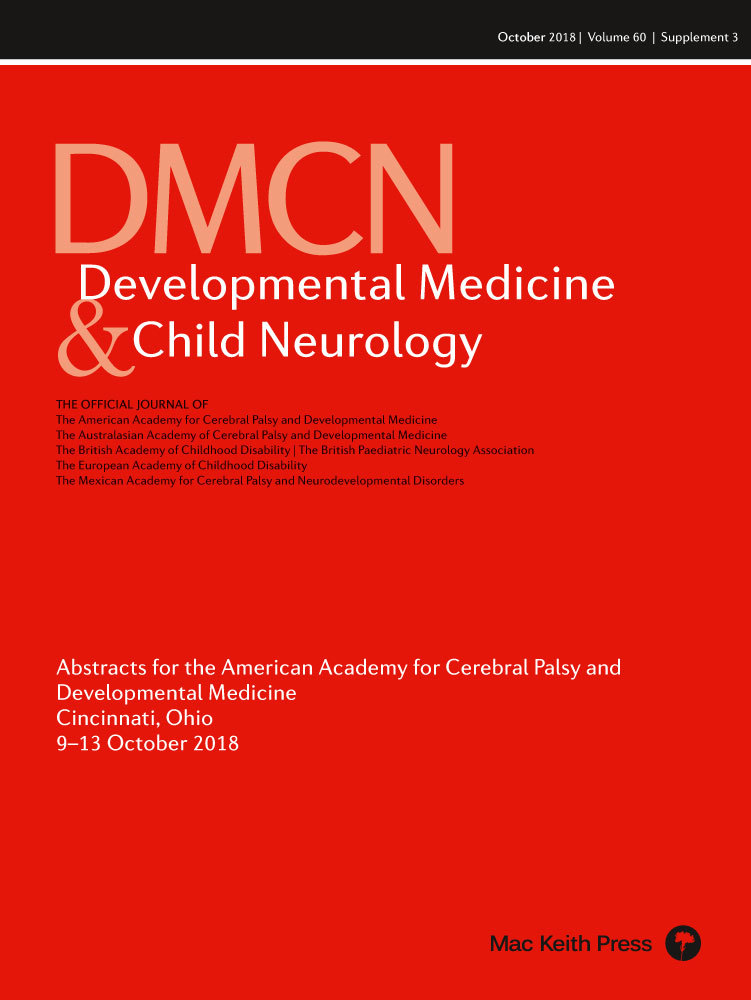Magnetic resonance imaging of the spine in idiopathic toe walking - is there a role?
C10
C May1, C Cheng1, B Yang1,2, S Mahan1, S Spencer1, J Kasser1,2, B Shore1,2
1Boston Children's Hospital, Boston, MA, USA; 2Harvard Medical School, Boston, MA, USA
Background and Objective(s): Little is known about the rate of intraspinal pathology in children presumed to have idiopathic toe walking (ITW). Because of the concern for spinal lesions, magnetic resonance imaging (MRI) of the spine is frequently obtained as part of the work-up in these children if toe walking is severe or prolonged. The purpose of this study was to examine the role of MRI in ITW, focusing on the rate of positive findings and those children who required a neurosurgical intervention.
Study Design: Single-center retrospective review.
Study Participants & Setting: A single-center tertiary care departmental database was queried for all patients with ITW who underwent MRI of the spine in the 5-year period between 2011 and 2016.
Materials/Methods: Patients were excluded if they had known intraspinal pathology or carried a diagnosis of a neuromuscular or syndromic condition thought to be the cause of their toe walking. Patient demographic, clinical, and treatment data were analyzed.
Results: One hundred and twenty-nine patients were identified with ITW who underwent MRI of the spine. Average age was 8.7 years (range 3 - 19 years), with 71/129 (55%) male. Primary indications for obtaining an MRI included: failure to improve with nonoperative management (27%, 35/129), spasticity/abnormal reflexes (26%, 33/129), and severe Achilles contracture (20%, 24/129). The remaining MRIs were obtained for a variety of indications, including enuresis (10%), pain (5%), late onset toe walking (5%), and “other” (9%). There were 24 MRIs with positive findings (19%). The most common finding was fatty filum (50%, 12/24). Additionally, there were 2 Chiari malformations, 1 syrinx, and 1 tethered cord identified. There were 8 other findings, including spodylolisthesis, compression fracture, wedged vertebrae, congenital scoliosis, thickened cauda equina nerve roots, tarlov cyst, and white matter changes. As a result of these findings, 4 neurosurgical procedures were performed, including sectioning of the fatty filum in 3 patients, and lumbosacral decompression and fusion for spondylolisthesis in one. All patients underwent nonoperative management for toe walking, with some combination of physical therapy, bracing, casting, and botox employed. Surgical lengthening of the heelcord was performed in 26 patients (20%) in the cohort for failed conservative treatment.
Conclusions/Significance: MRIs of the spine obtained in patients with ITW who do not follow a typical clinical course have a high rate of positive findings (nearly 20%), some of which may require neurosurgical intervention. These children often fail conservative management of ITW, necessitating surgical release of the heel cord. Distinguishing ITW from toe walking due to an underlying neurologic cause can be difficult, and MRI of the spine is a useful diagnostic tool when toe walking is unresponsive to conservative management, is associated with abnormal or asymmetric reflexes, or begins late in childhood.




